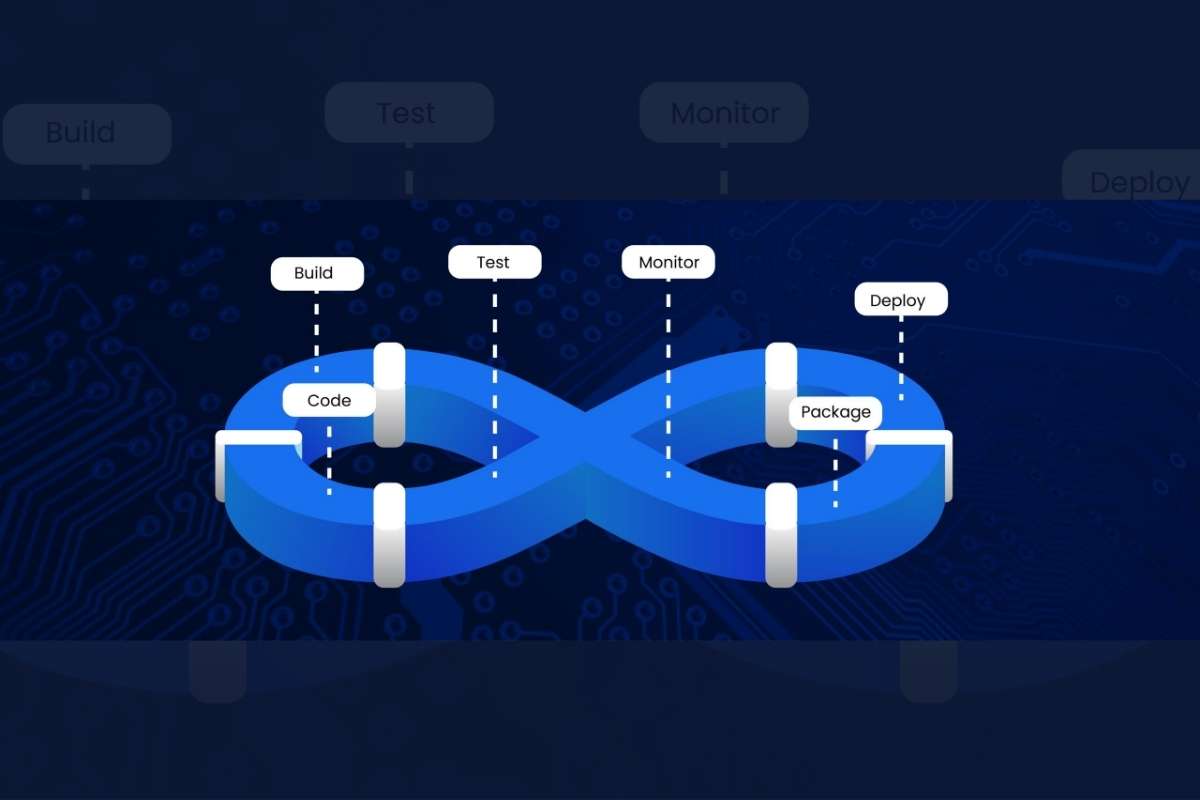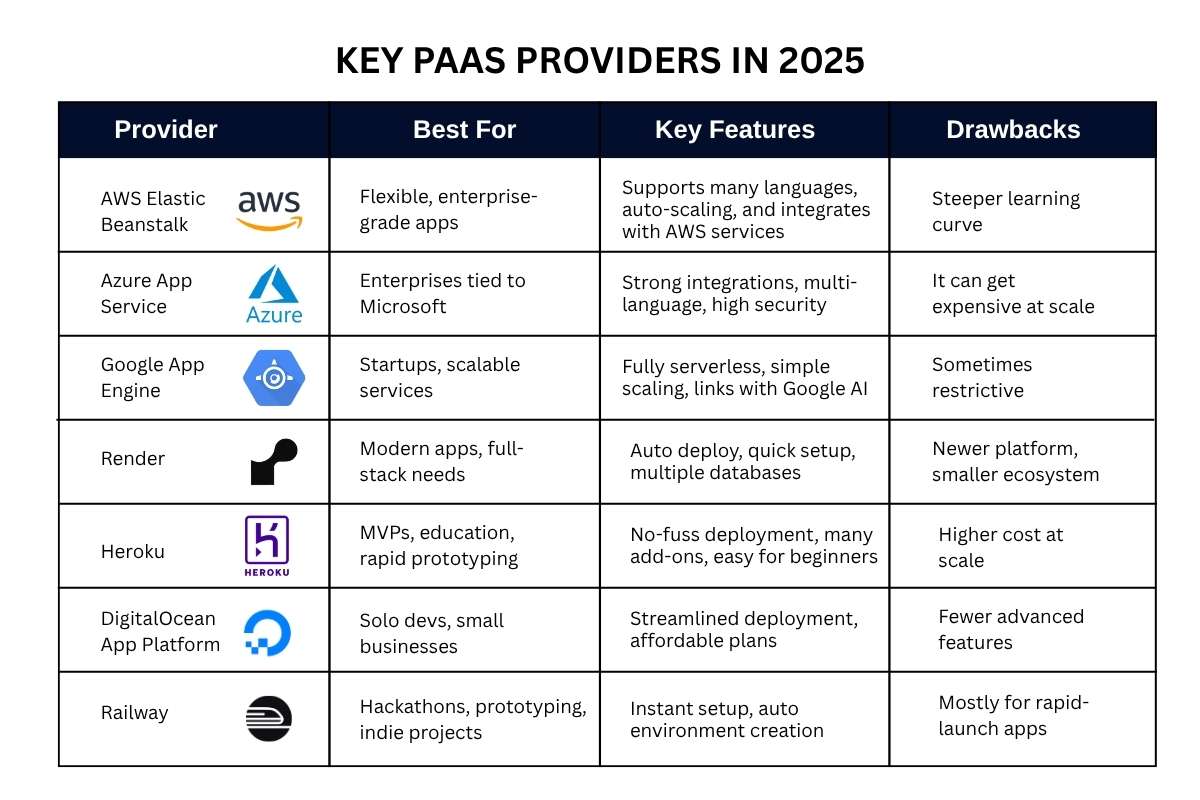Stepping into the world of technology in 2025 means facing a constant push toward new solutions, faster delivery, and smarter collaboration. Among the most transformative trends, PaaS (Platform as a Service) stands out as a cornerstone of modern application development. This approach is a practical answer to real business needs. Brands, startups, and independent developers are turning to PaaS to build, test, and launch software without the gridlock of heavy infrastructure.
With PaaS, technical complexity gives way to usability, cost savings, and creative freedom. This technology allows companies to shift from slow, hardware-focused projects to building user-focused services in a fraction of the time. In this article, we’ll discuss how PaaS is changing tomorrow’s innovations while staying grounded in everyday business reality.
What Sets PaaS Apart?
PaaS delivers not just infrastructure, but a ready-to-go environment for building, testing, and launching digital products. Instead of getting bogged down by complex hardware setups or time-consuming updates, you log on and start building instantly. Whether it’s a web app, an AI tool, or an e-commerce platform, PaaS (Platform as a Service) clears the road so you can focus on creativity and customer needs.
Let’s understand what that really means for people in the business and development world:
- Speed – New ideas get off the ground faster.
- Simplicity – No hardware management, tedious patches, or update worries.
- Teamwork – Remote and global teams work together seamlessly.
- Scalability – Projects scale up or down without friction.
- Cost Control – No upfront hardware investment or surprise bills.
Why PaaS Matters in 2025?
1. Speed to Market
Speed is critical for businesses aiming to stay ahead in the digital era. PaaS lets teams move from concept to deployment quickly by offering ready-to-use infrastructure and tools through the cloud. There’s no need for time-consuming procurement or complex setup; developers can sign in and start coding on day one. By removing logistical barriers, PaaS enables companies to release new features and apps with unprecedented agility. This rapid delivery helps organizations respond to market trends and customer needs almost instantly, ensuring they remain competitive.
2. Low Barrier to Entry
PaaS dramatically reduces technical and financial entry hurdles for both startups and established firms. Without the need for costly server rooms, dedicated IT maintenance staff, or upfront hardware expenses, teams of all sizes can innovate effectively. Businesses can scale resources up or down as needed, minimizing risk when exploring new ideas or entering untested markets. The accessibility of PaaS encourages experimentation and democratizes technology, opening the door for a broader range of voices and products in the software world.
3. Built-In Security
Security threats grow more complex every year, and few companies have the resources to manage all the risks in-house. PaaS (Platform as a Service) providers deliver robust security features as part of the standard package. These include data encryption, network monitoring, regular backups, role-based access controls, and compliance certifications that match industry standards. Users benefit from continuous updates and patches, reducing vulnerabilities. This trusted, managed security enables organizations to focus on their core products rather than constantly troubleshooting threats.
4. Smooth Scaling
As customer demand fluctuates, businesses must adapt without disruption. PaaS offers built-in scalability, and resources are automatically allocated according to real-time needs. Whether traffic doubles overnight or a seasonal campaign drives a temporary surge, businesses don’t have to worry about hardware limitations or performance drops. This seamless scaling ensures reliable user experiences and cost efficiency, as you only pay for the capacity you use. Growing startups and established enterprises both benefit from this stress-free model.
5. Flexible Payment
Traditional IT can bring unpredictable costs, making it hard to plan budgets. PaaS changes the game by introducing transparent and flexible payment structures, often based on usage or subscription. Companies avoid large upfront investments and can optimize spending by monitoring usage and scaling back unnecessary resources. For businesses expanding or launching multiple projects, this financial flexibility eliminates surprises and better aligns costs with actual business activity, helping leaders allocate money where it truly matters.
Core Features of PaaS (Platform as a Service)

1. Ready-Built Development Environments
With PaaS, developers receive an environment where programming languages, tools, frameworks, and libraries are already installed and configured. This setup eliminates the hassles of traditional system installation or compatibility issues. Updates and compatibility patches are handled behind the scenes, so teams can use cutting-edge technology with minimal effort. For fast-paced businesses, this means projects start promptly and time-to-value is significantly reduced. The removal of these technical barriers allows teams to focus squarely on producing creative software solutions.
2. CI/CD Integration
Continuous Integration and Continuous Deployment (CI/CD) are built into many PaaS offerings. This means developers can commit code, run automated tests, and push updates to production without manual intervention. These processes reduce human error, catch bugs before they reach users, and speed up development cycles. With CI/CD powered by PaaS, companies can deliver frequent updates and reliably respond to user feedback, creating a more dynamic relationship with their customers and keeping products relevant.
3. Effortless Collaboration
Remote and distributed work is a standard part of modern business. PaaS (Platform as a Service) fosters collaboration by giving team members around the globe access to the same cloud-based tools and assets. Changes, comments, and updates are synchronized in real-time, ensuring everyone works on the most current version of a project. This unified approach enhances productivity and reduces bottlenecks, making it easier to coordinate across time zones. For organizations with talent spread worldwide, this is essential to maximizing efficiency and creativity.
4. Automatic Scaling
Modern digital products need to handle unpredictable workloads seamlessly. Automatic scaling in PaaS puts this power in your hands, adjusting resources like processing power, memory, and bandwidth automatically. When user activity spikes, the system grows with it; when things slow down, the platform conserves resources and cuts costs. This approach means businesses no longer need to over-provision “just in case,” and users experience consistent performance. It is an intelligent, cost-effective way to adapt to real market demands.
5. Security and Compliance
Staying secure is a relentless challenge. PaaS (Platform as a Service) platforms reinforce digital safety by providing baked-in security features that go beyond the basics. From advanced encryption protocols to multi-factor authentication and role-based controls, these services protect sensitive data at every step. Many platforms also maintain certifications for GDPR, HIPAA, PCI-DSS, and other regulatory standards, making it much easier for businesses to stay compliant. This proactive approach to security lifts significant burdens from internal IT teams and provides peace of mind.
Key PaaS Providers in 2025

Choosing the right PaaS can be daunting. Here’s a look at some top-ranked platforms on the market:
| Provider | Best For | Key Features | Drawbacks |
| AWS Elastic Beanstalk | Flexible, enterprise-grade apps | Supports many languages, auto-scaling, and integrates with AWS services | Steeper learning curve |
| Azure App Service | Enterprises tied to Microsoft | Strong integrations, multi-language, high security | Can get expensive at scale |
| Google App Engine | Startups, scalable services | Fully serverless, simple scaling, links with Google AI | Sometimes restrictive |
| Render | Modern apps, full-stack needs | Auto deploy, quick setup, multiple databases | Newer platform, smaller ecosystem |
| Heroku | MVPs, education, rapid prototyping | No-fuss deployment, many add-ons, easy for beginners | Higher cost at scale |
| DigitalOcean App Platform | Solo devs, small businesses | Streamlined deployment, affordable plans | Fewer advanced features |
| Railway | Hackathons, prototyping, indie projects | Instant setup, auto environment creation | Mostly for rapid-launch apps |
How Teams Use PaaS ?: Real-World Examples
1. Startups Building on a Budget
Startups often operate under intense pressure, juggling limited resources with ambitious goals. By incorporating PaaS, startup teams avoid the expense and headaches of buying, configuring, and maintaining hardware. Developers get to focus their time and energy on prototyping, feature development, and user testing, all while remaining lean and agile. The ability to scale resources up or down instantly means these young companies can test new ideas or pivot quickly as they learn from the market, giving them a genuine shot at innovation and rapid growth.
2. Enterprises Requiring Scale
For established corporations, managing growth and ensuring uptime is mission-critical. PaaS (Platform as a Service) enables large organizations to handle massive workloads and sudden spikes in traffic without disrupting operations. Marketing campaigns, product launches, or viral trends often produce unpredictable demand surges. Instead of racing to expand physical infrastructure or risk website crashes, enterprises harness PaaS for resilient, elastic support. This results in better customer experiences, minimized downtime, and a reduced burden on internal IT departments.
3. Teams Working Remotely
The global shift toward remote work has fundamentally changed how projects are delivered. PaaS provides a centralized, secure workspace accessible from any location, enabling real-time collaboration regardless of geography. Teams can develop, test, deploy, and monitor apps together within a shared environment, creating a sense of unity even when dispersed. This model ensures that project updates are instantly available to everyone, reduces miscommunication, and accelerates decision-making. It’s a practical answer to the realities of modern, flexible work styles.
4. Experimental Projects and Prototyping
Innovation doesn’t wait for lengthy approval cycles. Teams exploring new technologies or launching pilot programs can use PaaS (Platform as a Service) to create, test, and refine concepts rapidly. Without the need for administrative overhead or worrying about infrastructure, creative experimentation flourishes. Whether it’s rolling out a beta version to select customers or stress-testing a feature in a real-world scenario, PaaS gives teams the freedom, safety, and resources needed to try new things with minimal risk.
PaaS is transforming how businesses and developers approach digital projects in 2025. By removing barriers and streamlining processes, it empowers teams to innovate quickly, collaborate efficiently, and adapt to new challenges, making it a must-have solution for organizations determined to succeed in the modern digital reality.
Choosing the Right PaaS for Your Needs

Here are some practical steps to pick what fits you best:
1. Know Your Tech Stack:
Make sure the platform supports your preferred languages and frameworks.
2. Security Needs:
For apps handling sensitive data, go with providers offering strong encryption, compliance certifications, and access management.
3. Budget:
Consider not just the starting price but how costs will grow as your user base or data volume increases.
4. Ease of Use:
Opt for a simple interface if your team is new to cloud tech.
5. Ecosystem:
If you already use AWS, Azure, or Google Cloud, staying within those ecosystems can simplify integrations.
How Pricing Works With PaaS ?
Gone are the days of big, upfront hardware bills. Instead, PaaS usually works on flexible payment models based on what you actually use: storage, computing power, number of users, etc.
Examples:
1. AWS Elastic Beanstalk:
Pay-as-you-go model, costs reflect actual use of AWS resources.
2. Heroku:
Charges per project and resource. Start small and upgrade as you grow.
3. Render:
Project-based, affordable for startups, but grows as you need more services.
Tip:Run a cost simulation with real traffic estimates to avoid surprises.
Upsides and Drawbacks of PaaS (Platform as a Service)
Upsides
1. Rapid Development:
Get from idea to product faster than ever.
2. Lower Costs:
No hardware, less need for specialized in-house expertise.
3. Global Collaboration:
Team up across continents effortlessly.
4. Worry-Free Security:
Compliance and data privacy handled by experts.
Drawbacks
1. Provider Lock-In:
Moving to another provider can get complicated.
2. Customization Limits:
Some platforms restrict deep infrastructure tweaks.
3. Ongoing Costs:
Monthly fees can grow with usage if not monitored closely.
PaaS Trends for 2025
1. AI/ML Integration:
Platforms now provide ready-made tools for artificial intelligence projects.
2. Serverless Expansion:
More services are taking care of the servers behind the scenes.
3. Hybrid Cloud:
Companies aren’t just picking one cloud anymore—they mix and match for flexibility.
4. Stronger Security:
Providers are promising tighter controls and faster responses to threats.
Conclusion
PaaS (Platform as a Service) is shaping how every digital business, in tech, retail, healthcare, and beyond, brings ideas to life. If you want less stress, quicker results, and a platform that grows along with your vision, PaaS is a real-world game changer. Don’t be intimidated by jargon; start simple, build fast, and let the platform do the heavy lifting. Whether launching a new venture or future-proofing an enterprise workflow, PaaS empowers teams to build what’s next, without worrying about what’s underneath.
Also Read :- A Comprehensive Comparison: Cloud Computing vs On-Premise Solutions






